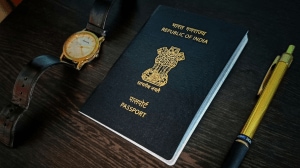Accidentally dropping your smartphone into water can be a heart-stopping moment. Whether it’s a splash, a full dunk, or an unexpected rain shower, water and electronics simply don’t mix well. Most modern-day smartphones come with ingress protection or IP rating which gives you some peace of mind. Some are splash resistant, while some have more advanced water resistance though you must know that there is no such thing as “water-proof” in smartphones.
Brands may go to great lengths to advertise the durability aspect of their smartphones, but water damage isn’t covered under warranty even if your device is IP68 or IP69 rated. So, you’ve got to be careful, not rash, while dealing with water around your smartphone. Should you get your smartphone wet, panicking and making hasty decisions can often make the situation worse. So, even when the going gets tough, you’ve got to remember to breathe and take it easy. Be rational, not emotional, and you’ll find, even this too shall pass.
Here’s a detailed guide on what not to do when your smartphone gets wet:
- Don’t turn it on: One of the most important things to remember is to avoid turning your smartphone on. Some restraint would go a long way to ensure the damage doesn’t spread. Water can just as easily cause a short circuit within the electronic components of your device, if not handled with care. Turning it on before the smartphone is thoroughly dried can lead to some irreversible damage. You’ve got to resist the urge to check if it still works; patience is key.
- Don’t plug it in: Plugging your wet smartphone into a charger can be the most disastrous thing you can do to yourself. Introducing an electrical current to a wet device increases the risk of short-circuiting by leaps and bounds. It’s just basic science. Even if the battery is dead, wait until you’re sure the smartphone is completely dry before attempting to charge it.
- Don’t shake it: Shaking your smartphone in an attempt to get rid of water droplets might seem like an obvious thing to do, but it can spread the moisture to other internal components increasing the chances of worsening the damage. Shaking can push water deeper into the smartphone, making it harder to dry out. Instead, gently dab the exterior with a soft, absorbent cloth.
- Don’t use heat sources: You might be tempted to use a hairdryer, oven, or microwave to speed up the drying process. It’s human nature. However, exposing your smartphone to high levels of heat can damage sensitive components and warp the device. Instead, try to air dry your wet smartphone preferably in a room with good ventilation.
- Don’t blow into it: Blowing into the smartphone to remove water can have similar effects to shaking. The moisture can travel to other parts of the smartphone, potentially causing more harm in the process. Additionally, blowing air may inadvertently introduce even more moisture from your breath, so you better stay clear of it.
- Don’t use rice: While rice has been a popular DIY (do-it-yourself) drying method, it’s not the most effective. Small particles of rice can get stuck in ports and openings, and it doesn’t always absorb moisture thoroughly. Apple recently updated its product documentation to specifically highlight to users that they must avoid using rice to dry their wet iPhones at all cost. Silica gel packets, often found in product packaging, are a much better alternative. If you don’t have silica gel, a desiccant bag designed for electronics can also be used.
- Don’t dismantle your phone: Taking apart your smartphone can void warranties and, if done incorrectly, can cause further damage. If you’re not experienced with phone repairs, it’s best to avoid dismantling your device. It is better to leave this job to professionals who have proper training and the right tools to do it.
- Don’t assume it’s fine after a short dry: Even if your smartphone appears to be functioning after a short drying period, hidden moisture can still cause internal damage over time. It’s essential to let your smartphone dry for at least 24 to 48 hours before turning it back on. Placing it in a sealed bag with silica gel can help absorb remaining moisture.
- Don’t ignore professional help: If you’re unsure about the extent of the water damage, seeking professional help is always a wise choice. Many phone repair shops specialise in water damage and can properly diagnose and fix any issues.
Accidents happen, but knowing what not to do when your smartphone gets wet can prevent a bad situation from getting worse. By avoiding these common mistakes, you can increase the chances of saving your device and potentially avoiding costly repairs or replacements. Remember to stay calm, act quickly but thoughtfully, and consider professional assistance when needed.







